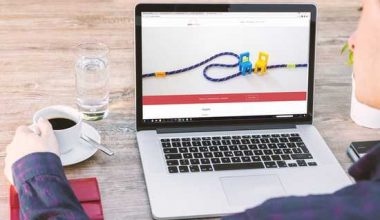You’ve always wanted to operate your own retail business, but the prospect of paying for a storefront, employee salary, and all of the other costs connected with a real presence is scary.
Fortunately, you don’t have to deal with that quandary in the modern era. Online retail is a viable choice for any ambitious entrepreneur to sell their products now more than ever. Here, we’ll go through the fundamentals of beginning an online retail business and how to prosper once you’ve got one up and going.
What is Online Retail?
Online retail is a sort of eCommerce in which a business offers goods or services to consumers directly via a website. The website may be their own or owned by a larger retailer or marketplace, such as Amazon.
The concept of online retail is similar to that of traditional retail. Customers enter the store, search through an ordered inventory of products and then pay for their things at checkout. It’s only that online retail occurs through the Internet, whereas brick-and-mortar retail occurs in person.
Benefits of Online Retail
There are a number of benefits to starting an online retail business, regardless of whether the brand has a physical shop or not:
- Since online retail stores operate 24/7, owners can generate money when physical retailers close up shop for the day.
- Online retailers can sell their goods and services to consumers located around the world, creating more profits for their brands.
- Online retail provides shoppers with a handy option to browse and purchase things.
- Consumers now have considerably more information about a retail store’s products, such as user reviews and ratings, which can increase their confidence in making a purchase.
- Online stores can provide greater value to customers through online account administration, order tracking and management, rewards programs, and so on.
- Due to their relatively low overhead expenses, online retailers do not need to pay for a physical storefront, staff it, and so on.
Yet, simply launching an online store is not a certain path to success and revenue. Establishing an online store needs roughly the same amount of labor as opening a physical store.
How to Launch a Business in Online Retail
Establishing an online retail business can be difficult and time-consuming. There is a lot that goes into putting one together, but if you know what you need to cover and approach the process methodically, it may be relatively easy.
Let’s look at the six stages you must follow to start an online retail business.
#1. Choose an industry.
This one is self-explanatory, but it’s still worth mentioning. Businesses don’t just appear out of nowhere — you have to have something to sell before you can sell it.
If you’re opening an online retail store, you undoubtedly have an idea of what you’ll sell. Yet, if the notion of being an online entrepreneur piques your interest — and you don’t yet have your big idea — you should ask yourself a few essential questions, such as:
- What do I know more about than most people?
- What have I accomplished professionally?
- What do I enjoy doing?
- Which companies do I purchase the most from?
- What industries am I most familiar with, and what are some prevalent trends within them?
After you’ve delved deep and gained a sense of what kind of business would mean the most to you, you should become acquainted with your potential competitors’ competitive landscape. How does your market look? Who would you be selling to? Who would you be competing against? How are they doing? What is the pricing like in your ideal industry?
Consume as much industry-relevant content as possible, whether through magazines, blogs, podcasts, or any other medium that can provide you with a detailed picture of your market. Examine any collateral, such as case studies, that your competitors may have.
Dig in one way or another. Take the time to learn about your selected industry and whether you can carve out a niche in its competitive marketplace. Once you’ve gotten a feel for it, you may make a firm decision about the type of online retail business you want to launch.
#2. Select a product.
Once you’ve decided on the online retail area you want to enter, you must decide on the precise product you want to offer. In a similar spirit to the preceding point, you’ll need to perform extensive study if you want to execute this correctly.
You want to find a product with active demand, a market that can be penetrated, and viable logistics. Your offering must be mass-producible and financially viable for you to make and distribute on a constant basis.
You also have to have some kind of concept of the location inside the competitive environment you’re aiming to inhabit – you need to differentiate if you want to hack it in your industry long-term. Determine what makes your product distinctive and proceed from there.
#3. Determine the demands of your target clients.
Let’s presume you’ve determined the “what” of what you want to sell. It is now time to concentrate on the “who” – after all, a business cannot function without customers.
Every product is tailored to solve something. Whether the problem underlying an offering is critical or insignificant, it always relies on some form of a pain point — and the success of your business depends entirely on how successfully you can handle it.
You must comprehend why customers purchase products like yours. Developing a feel for that generally takes a lot of thought, study, outreach, and flat-out effort. You could wish to contact as many potential clients as you can to get a sense of why they’re interested in your industry.
You might also look at the industry-specific publications I mentioned earlier. If people can post evaluations of similar products, look through them, and look for common themes, both positive and bad.
If you want to effectively contact your customers, you must first understand who they are. Familiarize yourself with your target base’s wants, interests, preferences, traits, and eccentricities – that intel with shape the buyer personas that will ultimately drive your sales and marketing efforts, down the line.
#4. Make contact with suppliers.
Whether you choose to sell other people’s products or make your own, you will need to collaborate with vendors and suppliers. When researching and contacting vendors, decide what is most important to you.
If keeping prices low is your primary focus, you’ll want to identify the cheapest supplier of whatever it is that you require. Maybe your focus is on quality and you’ll need to find the absolute best materials you can. You may be looking for:
- Manufactured in the U.S
- All-natural
- Cruelty-free
- Sourced ethically
- Environmentally friendly
Determine your values and priorities, and then choose your suppliers based on what you hope to gain from the connection.
Remember that this will most likely be the most expensive part of launching your business. Establish your budget and intended output before contacting providers; this will prevent you from spending more than you have.
#5. Develop your brand.
Now is the time to get inventive. The best product in the world won’t do anyone any good (or make you any money) if no one knows about it. Your brand will express who you are, what you do for clients, and what you stand for.
If you have available funds, now is an excellent moment to meet with a branding professional who can assist you in developing your company properly. They will collaborate with you to develop a company name, a logo, the style of your branding, and product packaging.
If you don’t have the funds to hire a branding expert, you can consult with friends and potential clients, undertake some of the work yourself, swap services or products with a branding expert, or build your branding on a shoestring budget utilizing sites like Upwork or 99Designs.
Check with a business like Bluehost or GoDaddy to see if the matching Domain is accessible while brainstorming brand names. If your brand may easily be misspelled, purchase the proper URL plus any URLs it might be confused for – so you can redirect people to your site.
You’ll also want to secure the social media accounts with the name you prefer. You don’t have to start all of them at once — or even use all of them — but you should protect the names so no one else can take them.
We won’t go over the legal requirements required to start an online retail business in this article, but you should consult with an attorney or conduct your own research to ensure that you are following all federal and state guidelines for starting a business.
#6. Set up your website and shopping cart.
Unlike a conventional brick-and-mortar storefront, your website will have to have a way to accept orders and take money. This is an online shopping cart, and you have several alternatives for installing it on your website, including Shopify, WooCommerce, and BigCommerce.
If you are not technically skilled, you may consider hiring a web designer to put things up for you. If you have the time, abilities, and drive to learn, you can set up your own website and connect your shopping cart.
Whichever choice you choose, make sure your site appears professional, is easy to navigate, loads quickly, and functions properly. That requires putting it to the test yourself and seeking the help of some pals. The last thing you want to see is an upset consumer complaining about an issue with your website — and you’d be lucky if they contacted you and didn’t just walk away.
What You Need to Succeed in the Online Retail Industry
- Product or service descriptions and costs: This should not be overlooked because it is one of the fundamentals. A clear and easy-to-find product or service description, complete with fees, is essential for a successful website.
- Your store’s name, location, and contact information: If you are conducting business online, there is no requirement for a physical address. Meanwhile, you must enter more information such as your phone number and email address, among other things. In this day of information overload, you don’t want to confuse your customers. Your ability to provide them with what they want and respond quickly to their difficulties will ensure that you keep them for a long time.
- Graphic representation of goods or services: Make sure to include photographs or visuals of your products and services. This allows you to transmit a large amount of information to your customers while also providing them with a seamless manner to determine whether they have found what they wanted or required.
Additional features include clear ordering methods, specific product lines, policies, and warranties (if any).
E-commerce vs. Online Retail
The act of purchasing and selling goods, services, or information over the Internet is referred to as eCommerce. There are various eCommerce models. These are the most popular models:
- Business-to-Consumer (B2C): Online retailers who sell goods or services to consumers through their own websites or marketplaces.
Examples include Netflix, Bank of America, and H&M.
- Business-to-business (B2B): online retailers sell goods or services to business customers via their own websites or marketplaces.
Examples: Salesforce, McKesson, DocuSign
- Consumer-to-consumer (C2C): Consumers sell their own goods or services to other consumers. Typically, consumers assist with the transaction by using an intermediate website.
Examples: Craigslist, eBay, Etsy
- Consumer-to-Business (C2B): Consumers sell their own goods or services to business customers. They could do this through their own website or an online marketplace.
Examples: Upwork, Shutterstock, Instagram influencers
eCommerce includes online retail. It is often classified as either B2C or B2B.
Marketing Strategy for Online Retail
After you’ve established your online retail store, you’ll need to devise a strategy for bringing customers through the “door.” How will you draw them to your website and persuade them to make a purchase while they’re there?
Let’s look at a few different methods you can increase traffic to your website:
#1. Employ Appropriate Keywords
What do your potential customers search for when they open Google? Google’s job is to connect searchers with relevant information. Using the right keywords on your website will inform search engines that you are the right business to connect with those who are looking.
Use Facebook and Google ads to target the characteristics of your “ideal customer” and advertise to those who meet your requirements. Don’t forget to consider where your potential customers spend their time.
#2. Develop your expertise
Before determining the nature of their problem, consumers frequently seek solutions. They may not have the vocabulary to explain the problem or be aware of the available solutions — but you do. Provide material such as blogs and quizzes to provide important knowledge that promotes you as a trustworthy expert and links to your products or an email capture so you can stay in touch.
How do you ensure that once people get on your website, they don’t leave without making a purchase?
#3. Provide interactive experiences.
Contemplate cosmetics and apparel. Without advice, it might be difficult for a consumer to choose things without seeing and trying them on. To entice your customer, provide information and experiences. A makeup company, for example, may provide a location to upload a photo and then “test” out different makeup looks. Not only would consumers be more confident in their decisions, but you could also provide suggestions for things they would never have considered on their own.
#4. Make video tutorials
Will customers have to assemble anything when your product arrives? Would there be usage instructions or helpful recommendations to make their experience more enjoyable? Make movies to show them how to put items together, how to use them properly, or how to use them in unexpected ways. Including recipe videos if your product is food or food-related. Show customers how to apply cosmetics properly if you sell them. The choices are unlimited, and if movies are interesting and do not drone on, you will gain points with consumers. It’s acceptable to let your personality shine.
#5. Employ well-curated content
This comprises both visual and written content. The tone of your goods and the personality of your business should be accurately reflected in your photos and visuals. Any website or blog post should do the same, clearly communicating what customers will gain from acquiring your stuff.
#6. Improve the consumer experience
No matter what type of business you run, you should always be asking yourself a very essential question: “Is it easy for clients to conduct business with me?” Your website should be easy to navigate and load quickly. Your shopping cart should be simple to use and reliable. Customer care should be present at every stage of the process, whether by live chat, chatbots, email, or a phone number to call. When a customer goes into a physical store, you have the opportunity to impress them with your personality. To run a successful online retail business, you must figure out how to do this when customers “step” into your virtual store.
Conclusion
The target audience is the single most important factor in why many internet businesses succeed. Before making a purchasing decision, their customers are not particularly interested in some fireworks, a bunch of whistles, or fascinating designs. Most online customers want to quickly find the things they want. As a result, the online retail business has seen a lot of success.
One of the challenges you will face as a business owner is your lack of understanding of how an online retail business operates and what it includes. But, in this post, we have examined what it means and the benefits of starting a business.
- RETAIL BUSINESS: Definition, Types & How to Start It
- Retail Customer Experience: Definition & All You Need To Know
- Retail Investors: How To Become One
- How to Compete with Online Retail as a Physical Business?
- DETAILED GUIDE TO RETAIL MANAGEMENT SYSTEMS






